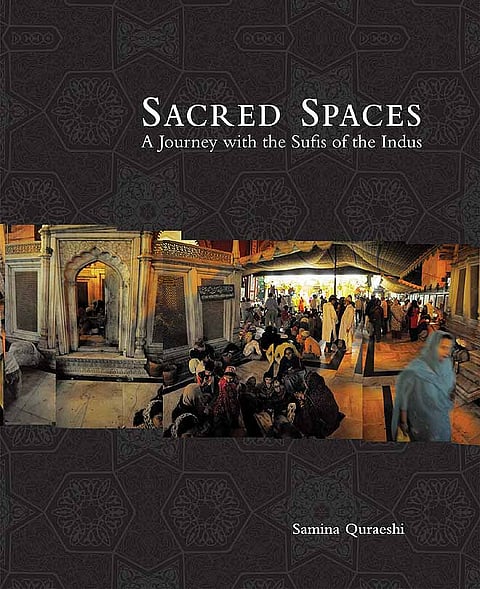

The subtitle of Sacred Spaces A Journey with the Sufis of the Indus by Samina Quraeshi (Mapin Publishing) is a little misleading. The Indus barely features in the book, and the Sufi saints of this book are occasionally to be found quite far from the Indus Valley and its tributaries, in Delhi and Ajmer, for example. And that&rsquos about where all my quibbling ends. Because this is a gorgeous book, both visually stunning and deeply insightful, the latter not usually an expected attribute of coffee-table books.
But then, most coffee-table books don&rsquot have introductory essays written by the intellectual doyens of the field &mdash in this case Ali Asani and Carl Ernst, both highly regarded authorities on South Asian Islam. Their brief essays, despite being erudite, are not heavy reading or overburdened with references &mdash they are meant as framing texts for the journey Samina Quraeshi is about to take the reader on, setting the scene for the layperson, and drawing the reader into the history of Sufism and what it can mean. But the best of the introductory essays is by Kamil Khan Mumtaz, a practising architect, on the architecture of Sufi shrines. This essay explains, simply, yet enthrallingly, how the traditional architecture of Sufi shrines and tombs was conceived as an external manifestation of the internal states of the Sufi, the struggle for and realisation of union with the divine. The essay forever blurs the distinction between built form and ritual practice, and hence not only opens up vistas for a new kind of art history of Islam, but also perfectly sets the stage for Quraeshi&rsquos visual exploration of the shrines she visits in the course of the book.
For unlike most visual studies of Islamic monuments, which tend to focus only on the building, Quraeshi frames her photographs in such a way that the buildings are not set apart from the people who throng the shrines, or serve as mere backdrops to the rituals practised here. They are but integral parts of the life of the shrines, their aesthetics, their character and the unfolding of their rituals. Along with her text, which is a deeply personal, and also deeply erudite, reflection of her connections and travels to Sufi shrines in India and Pakistan, these photographs truly make this a book worth buying a coffee table for.
